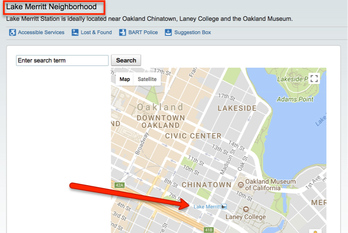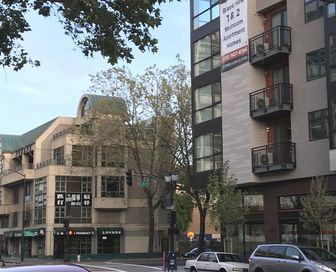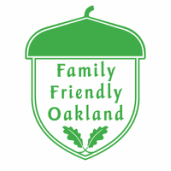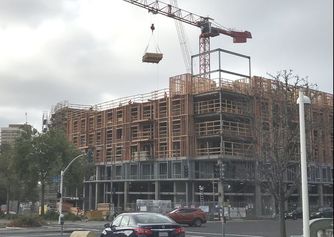| It’s hard to walk around in Oakland without noticing another new apartment building under construction. Before long, leasing offices will open and we will have thousands of new neighbors. How well will these new folks integrate into the fabric of existing communities? Will they shop in local stores? Join neighborhood cleanups? Do they plan on sticking around, or moving out to the suburbs when they need more space? What expectations do they have for the neighborhood? |
Use familiar local neighborhood names
- Use local neighborhood names on the website, and in collateral and conversation when describing the location.
- Review your website with neighborhood brokers and community leaders and solicit feedback to ensure the neighborhoods are referenced appropriately.
- Link to the neighborhood website from your website, if there is one.
- Use established local hashtags and location names when posting on social media.
- Station House Homes in West Oakland is particularly illustrative. In the "Neighborhood" section of their marketing website, it lists Pier 39 (San Francisco), 16th Street Bart Station (San Francisco) and the Promenade Beer and Wine Festival (Long Beach?!) as local amenities.
- 777 Broadway is located in Old Oakland, but claims to be in the “Heart of Downtown Oakland.” Old Oakland is not mentioned. Although located across the street from Chinatown, the website makes no mention, instead featuring Jack London Square, though it is farther away.
- 901 Jefferson’s website claims to be in “Historic Oakland,” a name not locally used for Old Oakland.
Don't create a new name for the neighborhood
(or appropriate the name of an adjacent neighborhood)
- Resist any temptation to re-brand the neighborhood. If there isn’t an obvious neighborhood name, don’t use one.
- Research existing local neighborhood boundaries and don’t attempt to change them or imply the property is in an adjacent area.
- Consider removing the neighborhood page on your website, or simply embed a google map showing the building location and neighborhoods.
- Refrain from promoting an amenity that isn’t in the neighborhood. If you insist, accurately note the distance. For example, “Lake Merritt is only 1 mile away.” Or, “Walk 9 blocks to Jack London square for waterfront dining.”
 Lake Merritt BART has always been a part of Chinatown (bart.gov)
Lake Merritt BART has always been a part of Chinatown (bart.gov) - Land with homes, local churches, and an orphanage in Chinatown was taken by the City of Oakland in the 1960s to build a new BART Station, BART headquarters and more, but the station was named Lake Merritt. The BART website still calls the area the “Lake Merritt Neighborhood,” even though it has always been a part of Chinatown.
- The “NOBE neighborhood” (North Oakland Berkeley Emeryville) has been promoted by real estate professionals, but many locals cringe at the term, in part because the area already has established names and identities. A local community organization even produced their own video to counter the rebranding with their own narrative incorporating the local history of racial inequality and economic injustice.
- The Oakland Central campaign appeared with great fanfare seemingly overnight, but locals still haven’t figured out why or how it’s different from Downtown Oakland.
- The "Neighborhood" section for the Ice House townhomes lists the waterfront Jack London Square, even though it’s located in West Oakland’s McClymonds neighborhood.
Use accurate and current photos from the neighborhood.
- Walk around the neighborhood and take photos of storefronts.
- Meet local business owners within walking distance and ask for permission to feature interior photos of them and their businesses. Don’t assume your marketing attention will be welcomed.
- Feature more business than just restaurants and bars - feature other amenities, shops and services that appeal to a wide range of ages, races and interests.
- Consider removing photos of people from your website, or at least avoid those that make any assumptions about the demographics, household composition and interests of residents. For example, young professionals on bikes, or childless millenials at a coffee shop seem to imply targeting of a particular an age or income.
- Consider skipping the neighborhood photos and focusing instead on photos of the units and building.
- The majority of the 777 Broadway photos for the neighborhood are not of the neighborhood. Stock photos are used to represent the farmers’ market, area restaurants and even a local coffee shop and residents. Stock photos of Jack London Square and Lake Merritt are featured on the neighborhood page and it’s not clear to outsiders that these photos are from beyond the immediate location of the property.
- The Domain Apartments also uses stock neighborhood photos showing happy residents and an urban cyclist.
- The 901 Jefferson website has a photo of the San Francisco Ferry Building a streetcar on the “neighborhood” page, even though the apartments are across the bay in Oakland.
- Allegro at Jack London Square uses stock photos, including a photo of the Golden Gate Bridge an hour away. Their Neighborhood page shows a San Francisco hillside of homes with Alcatraz in the distance.
Develop relationships with the neighborhood residents and community organizations
- Attend a neighborhood council meeting to meet community members, get neighborhood updates and listen to the local priorities.
- Work with residents to identify ways your company can help be a good neighbor. Commit to making an impact by improving the community amenities you feature, such as parks, recreation centers, libraries, schools and community organizations in the neighborhood.
- Provide a community board in your leasing office and feature local services, business cards and promotions for new residents.
- Get on the neighborhood mailing list, join any online communities and follow the local social media feeds for the neighborhood
- Support neighborhood public art, fundraising campaigns, cleanups and community events that contribute to the creativity and diversity of the neighborhood, and provide opportunities for neighbors to meet.
- Demystify your building by hosting an open house or housewarming event with food and entertainment and invite the community to come view the property and the units before they are fully leased.
- Adopt the storm drain in front of your leasing office and keep the sidewalk clean and litter free on your whole block.
- Sponsor a mosaic trash can in your neighborhood through the City’s Adopt a Spot program.
- Join the local Chamber of Commerce and follow Visit Oakland to learn more about Oakland.
- Sponsor and/or participate in National Night Out, Creek to Bay Day, and Earth Day events.
- Support and promote Oakland campaigns such as Small Business Week, Plaid Friday, and Restaurant Week, particularly if they include neighborhood businesses.
Help your new residents get oriented to the neighborhood and city
- Share Family Friendly Oakland’s Newcomers’ Guide to Oakland with all new residents and provide a neighborhood cheat sheet for new residents with the ways to connect (in person and via social media) with the neighborhood.
- Develop a newcomers’ coupon book or neighborhood guide for new residents or work with the neighborhood council and local community groups to present a neighborhood orientation.
- Moderate usage of marketing language that implies the building is a secure island of lavish sophistication, or that the location’s best feature is access to transportation networks to leave the neighborhood. Residents should be encouraged to integrate as a part the neighborhood.
- Encourage leasing office staff to visit area restaurants and shops and get to know businesses and other property owners.
Why now?

Given the current housing crisis, marketing messages that imply a walled off island of refined luxury may not only be a turn-off to some prospective renters, it may also escalate resentment and tension between newcomers and long-time residents.
As higher-income tenants move into new high-end apartments, artists, teachers, and service workers are getting pushed out, priced out and sized-out of the same neighborhoods. The outward migration of African-Americans and families means the city’s demographic profile is also evolving. Leasing and marketing practices that accelerate, ignore or even celebrate these shifts make it nearly impossible for a neighborhood in transition to unify as a community.
On the other hand, leasing offices and property owners also have the potential to strengthen existing neighborhoods and make deep investments in the community. Shifting towards a more neighborhood-friendly approach is the right thing to do. Especially in Oakland, especially now.

